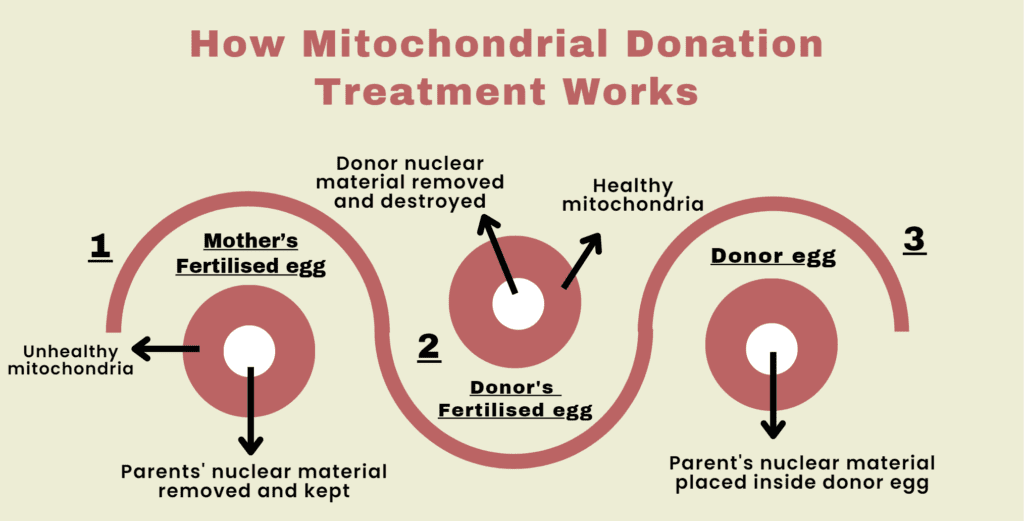Babies born from 3 DNAs – MRT Finally Got The Cure For Chronic Hereditary Diseases!
Healthy babies born having DNA combinations of 3 people using mitochondrial replacement therapy (MRT) technique, genetic, chronic diseases removed for life!
Imagine a world where DNA modifications can eradicate a hereditary disease passed on from parents to newborns giving them a healthy safe life ahead and also to future generations. After thousands of unsuccessful attempts, this is finally possible. This revolutionary treatment allows DNA modifications to cure the malfunctioning of mitochondria.
But how is it done? Is it safe & legal?
The answer to these questions lies in the study of MRT – mitochondrial replacement therapy. Mitochondrial donation, also known as mitochondrial replacement therapy (MRT) or three-parent IVF, is a medical procedure that aims to prevent children from inheriting certain incurable mitochondrial diseases. Mitochondrial diseases are genetic disorders caused by mutations in the DNA of mitochondria, the energy-producing structures within cells.
Let us see what MRT is and how it works.
What is MRT?
There’s a tiny part of our cells called mitochondria that we inherit from our mothers. They’re like the powerhouses of our cells, providing energy for our bodies to function. Sometimes, these mitochondria can have a glitch, like a small mistake in their genetic instructions that causes rare genetic diseases in babies.
In case the parents or a parent has faulty mitochondria, there’s a risk they may pass them on to their children. These faulty mitochondria can cause serious problems, like diseases that affect the muscles, brain, or even the heart.
Now, to cure this disease in children, that they certainly didn’t ask for and have nothing to do with, MRT treatment has been invented. It’s a special treatment that helps prevent these diseases from being passed down from generation to generation by making certain modifications to their existing DNA.
How Does It Work?

For the MRT procedure, DNA combinations from 3 people are taken, one being a male and the other two being females. Doctors take the mother’s egg and remove the faulty mitochondria from it. Then, take the healthy egg from the donor woman and use its nucleus that contains all the important genetic instructions and put the mom’s nucleus into it.
The resulting egg contains the intended parents’ nuclear DNA and healthy mitochondria from the donor woman.
In PNT, this technique is performed after fertilization. The nucleus of a fertilized egg is removed and transferred into a donated egg with healthy mitochondria. The resulting embryo contains the nuclear DNA from the parents and the healthy mitochondria from the donor.
The goal of mitochondrial donation is to prevent the transmission of mitochondrial diseases from the mother to her children. By replacing the faulty mitochondria with healthy ones, it is hoped that the risk of developing mitochondrial diseases can be significantly reduced or eliminated.
From Where It All Started?
The United Kingdom took the lead in 2015 by becoming the first country to introduce legislation governing mitochondrial donation.
While specific details are limited to protect the privacy of the families involved, the Human Fertilization and Embryology Authority (HFEA) confirmed that fewer than five babies have been born in the UK using mitochondrial donation. This achievement marks a significant milestone in the field of IVF medicine.
In 2016, the first baby was born using this technique in the United States signifying another major milestone. Since then, research and advancements in the field have continued to progress, providing renewed hope for families affected by genetic diseases worldwide.
These successes emphasize the potential of mitochondrial donation to eliminate the risk of debilitating conditions and offer a brighter future for families at risk.
As more countries explore the possibilities of this technique and refine their regulatory frameworks, the prospects for preventing the transmission of hereditary chronic diseases become increasingly promising.




One Comment